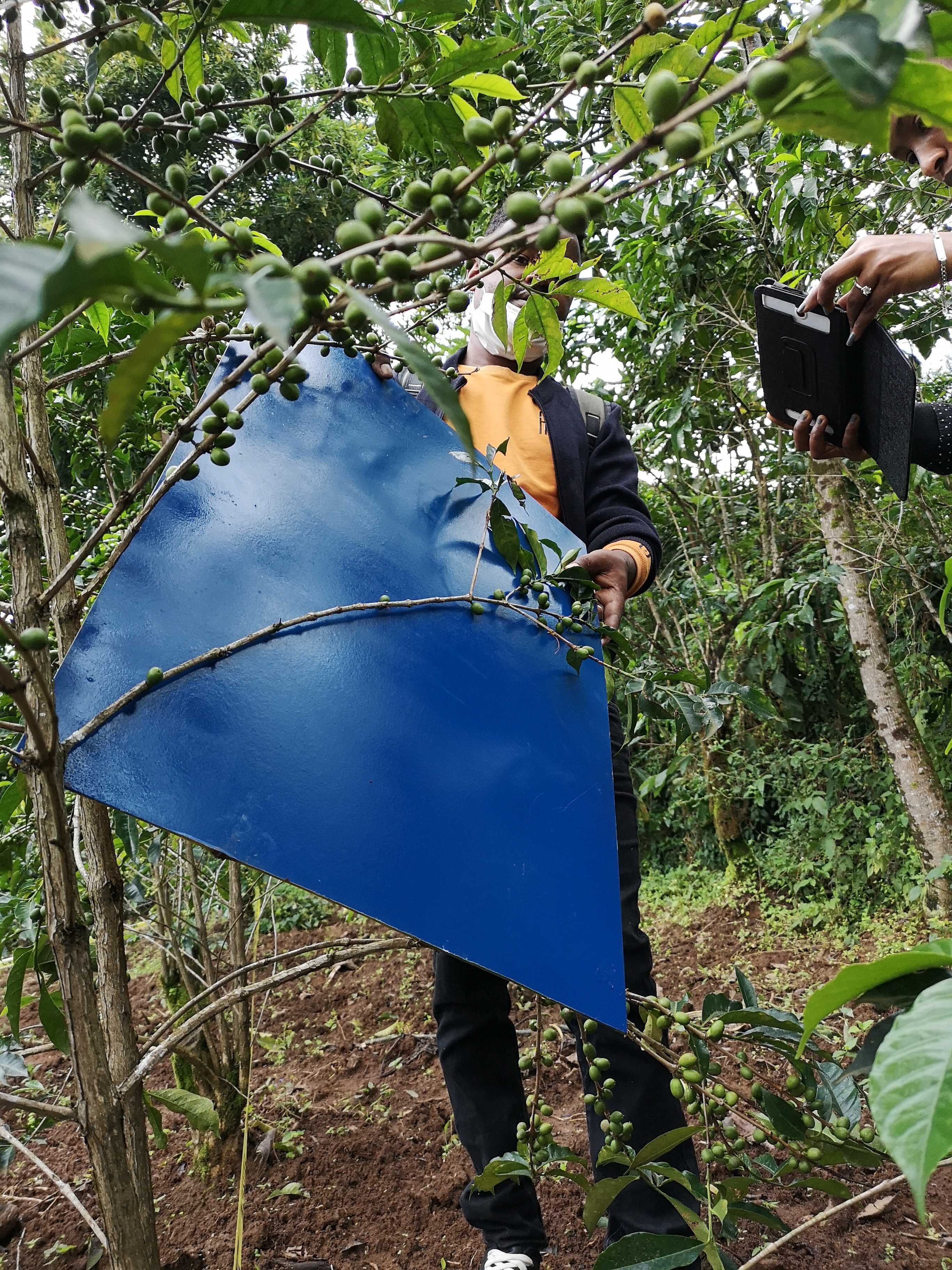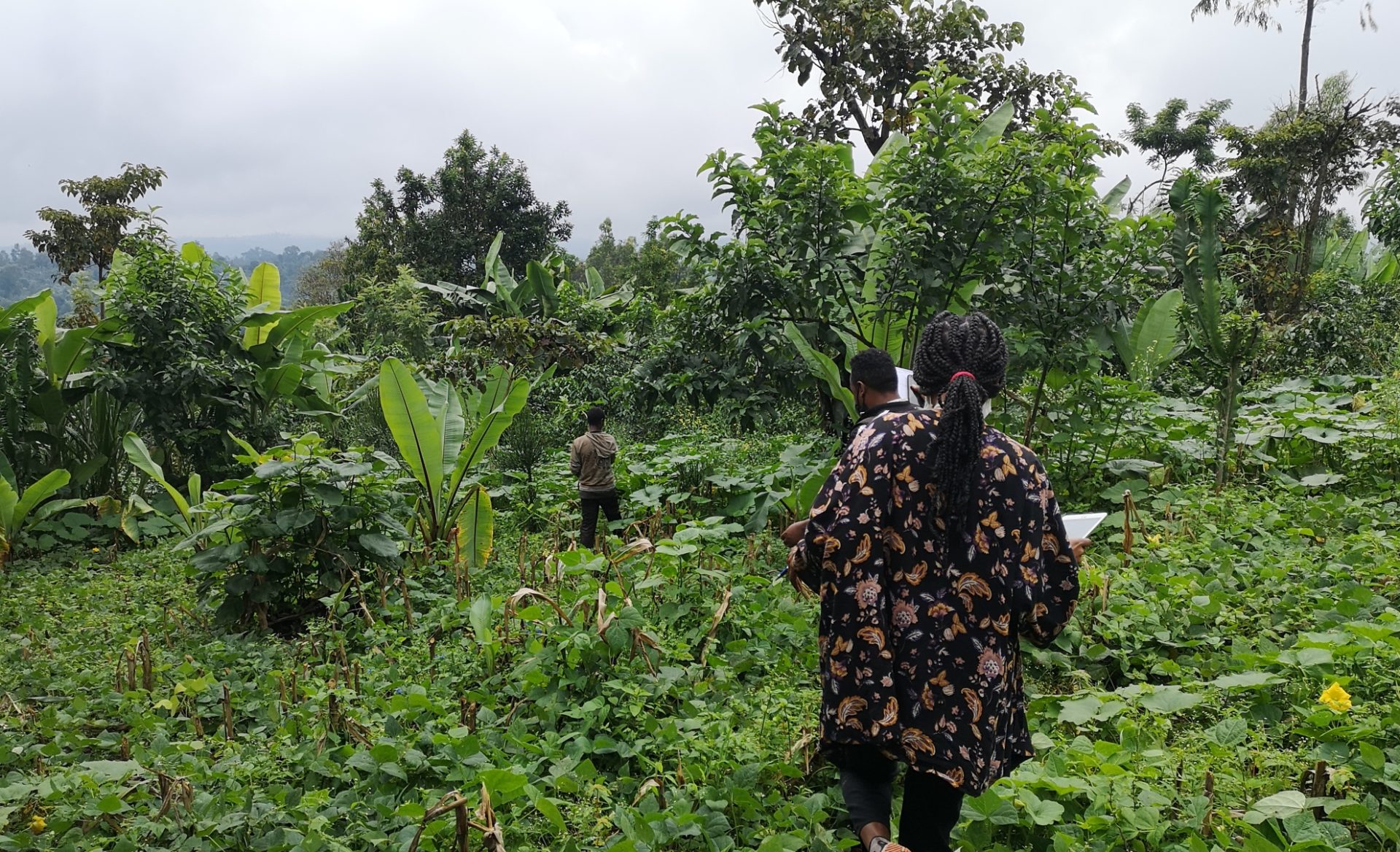What’s stumping, and why is it important?
Stumping, or rejuvenation, is the most important best practice for coffee farmers in Ethiopia. Stumping involves cutting the coffee tree at the stump after harvest. It’s especially important in Ethiopia since much of the coffee grown in the country was planted more than 20 years ago, with some trees even older than 40 years. Older coffee trees often lose productivity, resulting in lower yields over time.
Many farmers were never taught to rejuvenate their coffee. Those who were, aren’t always willing to adopt this practice as stumping takes a tree out of production for two to three years while new stems develop. The low adoption of stumping has resulted in Ethiopian coffee farmers having some of the lowest coffee tree yields in the world. So there is enormous potential to increase yields by stumping to encourage new growth.
Extension programs such as TechnoServe’s Coffee Farm College are one way to encourage farmers to stump. Another approach is incentives. We have led a promising pilot study and an expanded evaluation for HereWeGrow and TechnoServe to learn whether giving farmers a package of tools encourages them to carry out this best practice. But to date, it has been difficult to quantify the impact of stumping on coffee yields, because measuring on-farm yields is notoriously difficult.
Why is it difficult to measure coffee yields?
The coffee harvesting season in Ethiopia is long. It runs for about four months, from October to January. To maximize the quality of the coffee, farmers harvest individual cherries when they are bright red and ripe. Within harvesting season, farmers gather coffee every 10-20 days depending on altitude and climate, which both impact coffee cherry ripening.
Moreover, coffee trees are on a ‘cycle’ which means that they do not produce the same amount of cherries each year. Between these natural cycles and stumped coffee trees being out of production for at least two years, it can be difficult to keep accurate records of coffee farm yields.
Testing four methods to measure coffee yields in Ethiopia
Keeping these factors in mind, we set out to compare four yield measurement methods in a pilot study for HereWeGrow in Sidama, Ethiopia. On 30 farms that practiced stumping, we tested the following methods on two 10 by 10-meter plots – one plot with trees stumped in 2019, and another with unstumped trees:
- Full harvest. This entailed harvesting the entire plot and measuring total yield. This is the gold standard in yield measurement, but is also relatively expensive and time-consuming to implement as an enumerator must be present at the farm multiple times per harvesting season to collect the data. We carried out full harvest measurements on each plot to serve as a benchmark for this study.
- Farmer recall. This involved asking farmers to estimate their yield after harvesting.
- Cherry counting by enumerators. Enumerators counted cherries on a number of trees and branches on each plot. We then extrapolated the total yield of the plot by multiplying the final count with an estimated test weight.
- Cherry counting using branch imaging. In this method, cherries are counted by enumerators taking a photo of sampled trees and branches on each plot. The photos are then uploaded into a trained object detection mechanism algorithm – which we developed and tested with data from Central Kenya – that counts the cherries before we applied an estimated test weight to obtain the full plot count. We then used an error correction formula on the high-quality images.
Branch imaging in action

What did we learn?
First, some limitations. Our pilot study had a limited sample size. This means that we couldn’t assess any potential causal association between stumping and yield estimates. In addition, we couldn’t perfectly compare stumped and unstumped trees in our sample. This is because we compared trees stumped in 2019 with all types of trees that were not stumped – including trees not yet ready for stumping. In an ideal situation, we would have compared trees that were stumped in 2019 with old coffee trees ripe for stumping. The results that follow are therefore correlations only.
On stumped plots: Using the full harvest (method 1) as a benchmark, we found that the cherry counting models (methods 3 and 4) appeared to be good at predicting coffee yields on stumped plots. Farmer recall (method 2), however, significantly overestimated yield on the stumped plots.
On unstumped plots: In contrast, the cherry counting models were not good at predicting yields on unstumped plots. This is because unstumped trees show greater variation in terms of size, stem composition, age and health. Interestingly, farmer recall was closer to the full harvest benchmark on unstumped plots than on stumped plots.
What’s next?
This pilot provided new insights into how to effectively measure coffee yields. Namely, that different methods do not work equally well on every type of coffee tree. Different methods and models might be needed for plots with different types of coffee trees (cherry count-based models, for example, do not seem to work well on older coffee trees).
Farmer recall, however, is cost-effective and might be more accurate than we think – especially if farmers are supported to record their yields throughout the harvest season. This is supported by the findings of our study in Kenya. Future studies could test ways to do this, for example through regular text-based surveys for households with access to a working mobile phone.
Together with TechnoServe and HereWeGrow, we are also implementing a full harvest study at a larger scale. This will allow us to understand with greater certainty the effect of stumping on coffee yields in Ethiopia.
The more easily and accurately we can measure yields, the better evidence researchers and implementers can provide on what works to encourage farming best practices like stumping. These practices improve coffee yields, and ultimately, livelihoods.
Mats Hoppenbrouwers is a Research Associate at Laterite. TechnoServe is an international non-profit supporting smallholder farmers. HereWeGrow is a non-profit organization with the goal of improving the livelihoods of coffee farmers and their families, with a focus on Ethiopia.
Image credits: Mats Hoppenbrouwers and Abenezer Yared.
